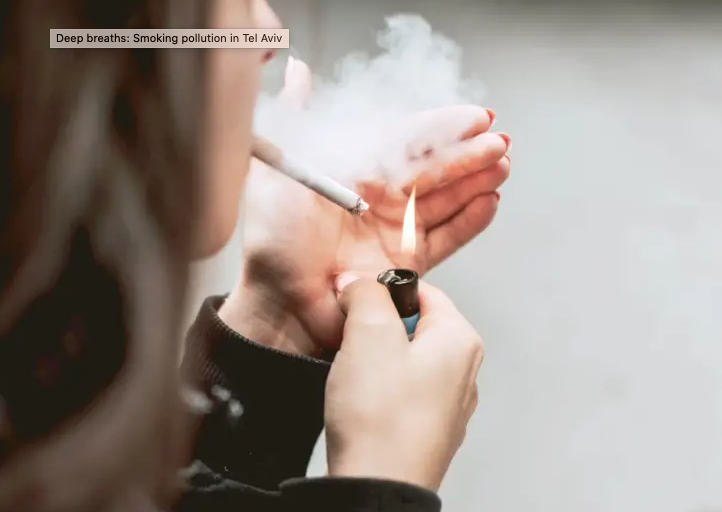The researchers wanted to examine whether raising awareness of children’s exposure might change their parents’ behavior.
Seventy percent of children with parents who smoke were found to have nicotine residue in hair samples, according to research done by the Sackler Medical School of Tel Aviv University.
The study was peer-reviewed and published in Nicotine & Tobacco Research.
The researchers wanted to examine whether raising awareness of children’s exposure might change their parents’ behavior. About 140 Israeli families, with children up to age 8 where at least one parent smokes, participated in the study.
The smoking average per household was 15 cigarettes per day. A third of the participants reported that they smoke inside the home, and a third said that they only smoke on the porch.
Researchers tested children’s level of exposure via a biomarker: nicotine in hair, testing whether nicotine became an integral part of the strand of hair having originated in the body and not just external precipitate. The nicotine in the inner shaft of the hair represents that which has been absorbed by the child and reached the bloodstream. The external residue was washed off before analysis.
Nicotine residue was found in 70% of the hair tested.
The researchers divided the families into two groups. One had comprehensive instruction about the effects and dangers of exposure to smoke, including feedback and information about the test results, and was also given tools to protect their children from exposure to cigarette smoke and a recommendation to keep their home and car smoke-free. The second group only received feedback about nicotine levels in the children’s hair after six months, at the end of the study.
Six months after the start of the study, the researchers conducted additional nicotine tests on the children’s hair. A statistically significant decrease was found in both groups.
Researchers theorize that knowledge that the children were tested for nicotine exposure, and that additional testing was planned, resulted in the parents changing their behavior and reducing the children’s exposure – regardless of whether they had been coached in the interim.
“To our great dismay, according to Health Ministry data, approximately 60% of small children in Israel are exposed to secondhand smoke and its harmful effects,” according to Prof. Leah Rosen, who ran the study.
“Based on the study’s findings, we believe that conducting nicotine testing for every young child in Israel – in the hair, urine, or using other testing methods – may change parents’ perceptions about exposing their children to tobacco smoke,” she said. “Changing this perception can also result in changing behavior, exposure levels, and even social norms regarding passive exposure to smoking – both exposure of children as well as exposure of adults.
Prof. Rosen explained to the Post that exposure to tobacco smoke is dangerous, especially for children who suffer both short-term harm (such as the increased risk of sudden infant death syndrome, bronchitis, ear infections) and long-term harm (delayed lung development, long term damage to the cardiovascular system).
She also explained that most Israelis don’t fully understand the damage from either active smoking, or from secondhand smoke. And they are often not even aware that the exposure is occurring.
“It is critical that they protect their children from tobacco smoke.” Rosen told the Post. “There should never be smoking inside the house, including at windows or on porches. Besides the immediate exposure, the toxins from the tobacco smoke are absorbed into the walls, carpets and upholstery and are slowly released over time. This is known as thirdhand smoke. Smoking on porches often exposes neighbors – Why should anyone hurt their neighbors?
“We thank the families that participated in the study, and call upon smokers to avoid smoking anyplace where non-smokers could be exposed – in particular, at-risk populations, including children, pregnant women, elderly and those who are ill,” the professor said. “Non-smokers must understand that there is genuine risk in exposure to tobacco smoke, and they must insist upon their right and the right of their children and family members to breathe air that is smoke-free everywhere.
“Of course, the government has a central role in enforcing laws pertaining to smoking in public places and by continuing to enact laws to protect the individual everywhere from exposure to secondhand smoke,” she said.
Natan Rothstein contributed to this report.
Source JPOST
